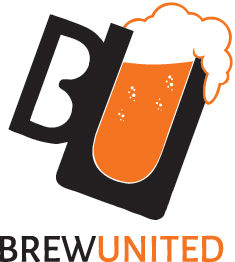Developing Your Own Terroir (Style) for Your Beer
I'm assuming if you're reading this, you like beer. You probably have a particular beer or style you enjoy more than others. Have you ever stopped to think how that beer style came to be? While it may be hard to believe in the age of overnight shipping, hops available from around the globe, and hundreds of cultured yeast strains available, most styles were born out of limitations and necessity. People were forced to make the most of the malt, water, and hops they had available in their town or village. Their beer fermented with whatever happened to be floating around in the air or lining their barrels. This hyperlocality of source materials gave the beers they produced a certain terroir unique to that beer. Over time, refinements and industrialization shaped these local products into the beer styles you love today. While it's fun to make and consume these established beers, we have lost something along the way. We don't challenge ourselves anymore because the necessity to do so has gone. The aforementioned convenience and abundance of ingredients have given brewers possibly too much freedom to create. Instead of developing beers based on terroir, they're based on ever escalating gimmickry. What does a Triple Imperial Habanero-Pineapple-Peanut Butter IPA made with 5 strains of Brett and aged in Birch barrels tell you about the brewer, the place it was made, or the locals that drink it other than the possibility of a high prevalence of head injuries? If you're reading this and you make beer, I challenge you to become more creative in your brewing by purposefully limiting yourself to local ingredients. Develop your beer to reflect not just who you are individually, but what the experience of your locality is like.
"So, that's all very high minded stuff" you're probably thinking "but how do I do that?". Well, beer is mostly water, so start with that. Get a current water test done someplace like Ward Labs or get a report from your local municipal water supplier. Dig into it and really understand what you're working with. Not everyone is blessed with soft, Pilzen-like water, so maybe light lagers are off the list. Alternatively, not everyone has Burton water, so an IPA won't necessarily hold the same punch. Understand the pros and cons of your most prevalent ingredient and try to alter it as little as possible.
What about malt? You could take the hardline approach and grow grain yourself. If this is a feat you can pull off, then I applaud you. However, this isn't feasible for most brewers. Not to fear though, with the rise of craft brew, the craft maltster has come into fashion as well. You have Valley Malt in Massachusetts, Riverbend Malt in North Carolina, FarmHouse Malt in New York, Rebel Malt in Nevada, Pilot Malt House in Michigan, Colorado Malt in Colorado, and probably more mircomaltsters that I missed or that are opening up soon. Most of these maltsters are contracting with local and regional farmers. That gives you terroir with a whole lot less work than trying to malt it yourself. That's not to say malting it yourself is out of the question. Even if you use the same grain as a micro or macro maltster, your process can yield a slightly different product. Let's take a far flung place such as Hawaii. Barley production isn't really a staple crop and I don't think there's any local maltsters there (yet), but Hawaii does have a tradition of using hot volcanic rocks in cooking. What would malt kilned over lava be like? There's only one way to find out. The point is that even if you can't find a local maltster, you can find a way to make the malt your own.
Why stop at malt? Every place has some form of fermentable product. Go to a local farmers market, not Whole Foods, but an honest to goodness farmers market and get local produce. Maybe that means some kind of fruit particular to your area. Almost every state has an apiary that products local honey. The south has sorghum syrup. The southwest has agave. The Midwest grows sugar beets, so that may be an option. New England has maple syrup. The produce doesn't even have to be sweet. Any locally grown starch could be added to your mash for conversion. You should keep an open mind and think "How can I use this to get drunk?"
One of the easiest ways to incorporate terroir is growing your own hops. Despite what you may have heard, anyone, anywhere can grow hops as long as you have access to water, fertilizer, and southern exposure. Your yield might not be as high as commercial growers, but it can be done. I container grow my hops and I live "too far South" for it to be possible, yet I manage to take in about a pound of dried hops per year per plant. The same hop grown in different places can develop wildly different traits, so even if you have to import rootstock, it'll have a local flair after a season or two. Remember that hops aren't the only botanical used in brewing. For hundreds of years, ale was supplemented with herbs or they even replaced hops entirely.
Next to water, yeast might be the easiest ingredient to come by. Yeast is literally everywhere. If you leave your wort exposed to the environment, I promise you that something will start to ferment it. Now, whether or not that something produces that you'd want to drink is another story. You can increase your chances by swabbing local fruits, but there are some other options to consider. You could ask a local brewery for yeast. While most breweries will get their yeast from a lab, if you catch them after the 7th or 8th generation of the pitch, you might get some minor variations from the strain. If you happen to be local to Arcadia Brewing, it's not the 7th or 8th, but the 800th+ generation they've been pitching the same yeast. Although it may have started out as Ringwood, I doubt it's the exact same thing now. So that could provide some local variations to your yeast. There's nothing to say you couldn't pull off such a feat a home. Start with a yeast you know and love and select for traits you like over many generations. It may end up completely different than the yeast you started out with!
That pretty much covers aspects of terroir you can get out of your ingredients, but there are more aspects to consider. Since terroir is about the place, think about the place you're in. Perhaps it has some particular culture or cuisine that you could incorporate into your brewday. How would a brewer in New Orleans best capture Creole culture in a beverage? What would make a beer a "New York beer" or a "San Francisco beer"? Maybe the land itself will have an influence. If you live in Alaska or northern Canada, maybe you'd want to work on developing "natural lagers" by finding a place to store your beer outside. More southern regions could explore how far one could push the concept of saisons and other warm weather yeast beers. Is your state rich in granite? Maybe you can use some of your local stone for a variation on steinbier. Look at anything that defines the place you live in and think "how can this help me make beer"?
Hopefully by now, the message is clear: Brewing inspiration is all around you! You don't have to go to only making estate beers to make a beer your own, but I hope you consider all the possibilities out there and explore some of them. Who knows, your next brewing experiment could end up being the next hot beer style!
Permalink
Tags for this post: terroir, style, local, beer, ingredients, homebrew






Please support BrewUnited by using our Amazon affiliate link when doing any shopping there - be it for homebrewing or for your regular shopping!
0 Comments

